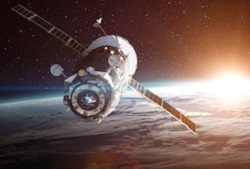The first billion years of the Universe
The Big Bang refers to the rapid and violent expansion marking the birth of our Universe. Scientists have now developed unprecedented high-resolution simulations of the first billion years of that expansion (First Billion Years Simulations) with the EU-funded project 'The birth of the first stars and galaxies' (GALAXIES BIRTH). The overarching objective was to test the theory of the existence of population III (POP III) stars, hypothetical first stars composed entirely of primordial gas containing mainly hydrogen and helium. POP II stars have additional elements, although not in high proportions, whereas POP I stars have high proportions of elements other than hydrogen and helium. Star creation can be studied through the original molecules and ions in the Universe. The ionised gas that was the Universe in the first 300 000 years gave way to the neutral intergalactic medium (IGM) present until around 500 million years after the Big Bang. After this, a period of reionisation lasted until around 1 billion years after the Big Bang during which the earliest stars and galaxies emerged, likely ionising the neutral hydrogen in the IGM. GALAXIES BIRTH scientists employed ultra-high–resolution smoothed particle hydrodynamics (SPH) models. Project results are the first to self-consistently calculate the reionisation fraction of hydrogen during the reionisation period, a milestone in the history of the Universe related to creation of the first sources of light. They are also the first to show the self-regulating nature of star formation and, in particular, the role of molecular hydrogen abundance on it. Insight was gained regarding the transition from POP II to POP III star formation, the formation of massive seed black holes and dark matter. Project models have given birth to first-ever descriptions of the first 1 billion years of the Universe. Greater understanding of the formation of the first galactic structures will guide predictions and observations for upcoming space-based satellite missions to ensure time in space is well spent.







